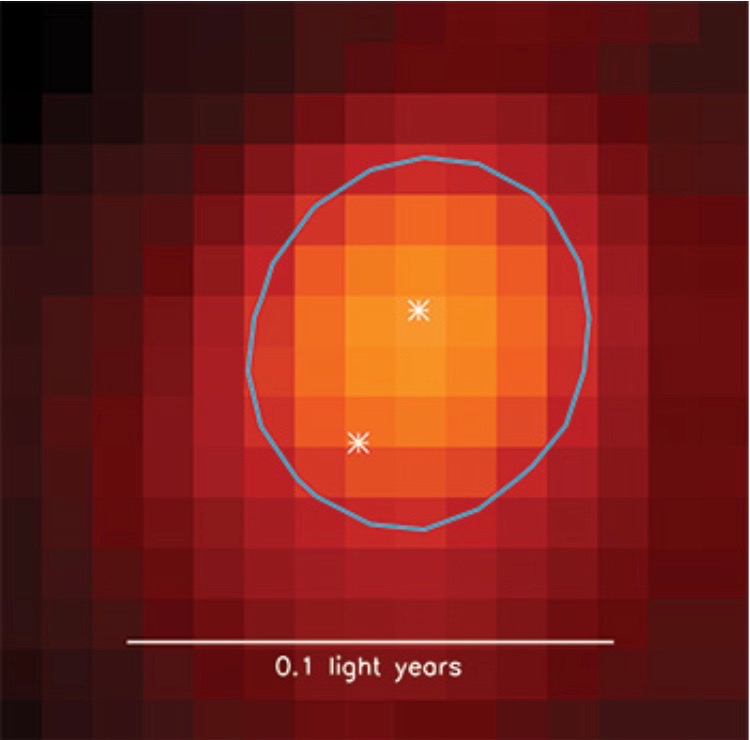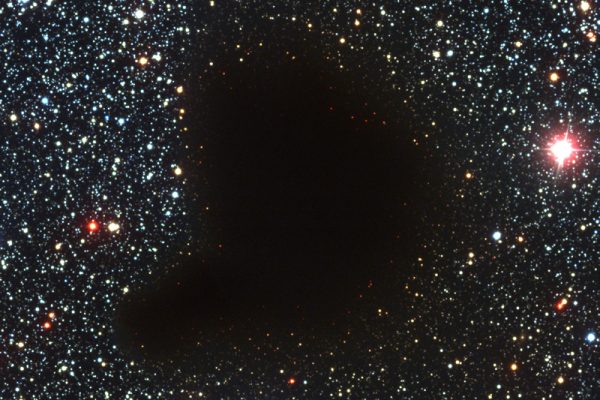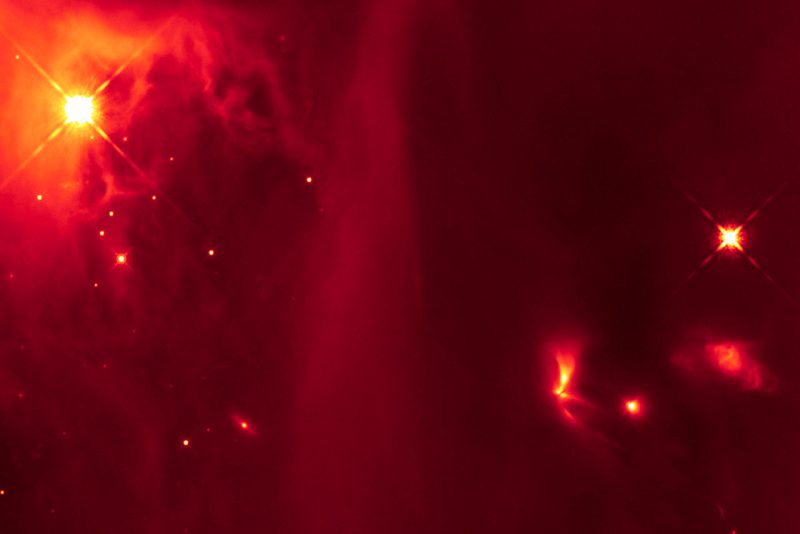
University of California Berkeley said on June 13, 2017 that our sun “almost certainly” was born in the company of at least one other star, a twin, though not an identical twin. What’s more, according to this new research study, every other sunlike star in the universe was born with a sibling, also. This assertion is based on a radio survey of the Perseus molecular cloud, which is a giant cloud in space known to be forming new stars, located 600 light-years away in the direction of the constellation Perseus. And it’s based on a mathematical model that can explain astronomers’ observations of the Perseus molecular cloud only if all sunlike stars are born with a companion.
Astronomers have searched for a companion to our sun. Along the way, this hypothetical companion was dubbed Nemesis – for the Greek goddess of retribution – because the sun’s sibling was supposed to have kicked an asteroid into Earth’s orbit that collided with our planet and exterminated the dinosaurs. A Nemesis-type star in our own solar system has never been found, however. In recent years, the name has popped up mostly doomsday conspiracy theories, where an unseen and undiscovered “death star” companion to our sun periodically rains comets down on Earth.
Meanwhile, Steven Stahler, a UC Berkeley research astronomer, and Sarah Sadavoy, a NASA Hubble fellow at the Smithsonian Astrophysical Observatory, have been collaborating on their ideas about star formation – using observations of the Perseus molecular cloud as a basis for comparison – and now, according to Staher:
We are saying, yes, there probably was a Nemesis, a long time ago.
We ran a series of statistical models to see if we could account for the relative populations of young single stars and binaries of all separations in the Perseus molecular cloud, and the only model that could reproduce the data was one in which all stars form initially as wide binaries. These systems then either shrink or break apart within a million years.

In this study, “wide” means that the two stars are separated by more than 500 astronomical units (AU), where one AU is the average distance between our sun and Earth (93 million miles,or 150 million km). They said a wide binary companion to our sun would have been 17 times farther from our sun than its most distant major planet, Neptune.
Based on their model, the sun’s young sibling – the star they’re called Nemesis – no longer resides in our solar system. Their statement explained it:
… most likely escaped and mixed with all the other stars in our region of the Milky Way galaxy, never to be seen again.
Stahler and Sadavoy posted their findings in April on the arXiv server. Their paper has been accepted for publication in the peer-reviewed Monthly Notices of the Royal Astronomical Society.

First author Sarah Sadavoy added:
The idea that many stars form with a companion has been suggested before, but the question is: how many? Based on our simple model, we say that nearly all stars form with a companion. The Perseus cloud is generally considered a typical low-mass star-forming region, but our model needs to be checked in other clouds.
The idea that all stars are born in a litter has implications beyond star formation, including the very origins of galaxies, Stahler said.
Read more about this study from UC Berkeley

Bottom line: Steven Stahler at UC Berkeley and Sarah Sadavoy at the Smithsonian Astrophysical Observatory ran a series of statistical models to see if they could account for the relative populations of young single stars and binaries in the Perseus molecular cloud. The only model that could reproduce the data was one in which all stars form initially as wide binaries.











